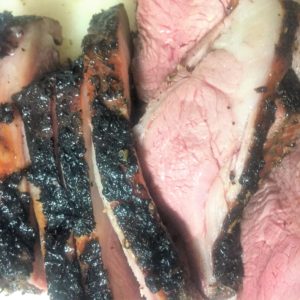Homemade Pizza Dough 101
Hello all, I read this on Facebook and it is simply too good to not pass on. If you are interested in making your own pizza dough from scratch, this article is an amazing resource.
Published with permission. Original post available <here>
Note: If you find this post useful, please help me promote it by sharing it! Thanks!
I have been experimenting and learning about making great pizza dough for the last year or so with a lot of success. I want to share some of what I have learned along with some recipes and technique.
Let’s start out with the basic recipe for a really nice and easy pizza dough:
500g all-purpose or Italian 00 flour (about 3 1/4 cups)
350g water (1 1/2 cups) (See note)
12g salt (2 1/2 tsp Kosher salt – Diamond Crystal Brand **)
6g active dry yeast (1 3/4 tsp) (See note)
10g (2 teaspoons) extra virgin olive oil
5g sugar (1 teaspoon)
** This is why weight is important. If you weigh the salt, it doesn’t matter what kind of salt you use. 2 1/2 teaspoons of table salt is a LOT MORE salt than 2 1/2 teaspoons of Kosher or Sea salt. 2 1/2 teaspoons of table salt weighs 18g. That’s 50% more salt. Big difference!
Note: The temperature of the water and the amount of yeast you use will change depending on which method you choose for your dough. I will show you three methods in this article. One is a very quick method where you can have pizza dough ready to use in less than 2 hours (95-100°F water and 6g active dry yeast.) The second method is a 24-hour ferment and the third method is a 72-hour cold ferment (room temperature water and 1g active dry yeast.)
The listed recipe is my “Zero to Pizza in Two Hours” recipe. It’s just what it says. It’s quick and easy to make. You can reference this video on YouTube for this recipe and technique:
To start this recipe, you need to weigh or measure all your dry ingredients into the bowl of a stand mixer fitted with a dough hook. Use a whisk to combine the ingredients in the mixing bowl. Add your 95-100°F water to the bowl and mix on slow speed until the dough comes together. You will need to use a spatula to help it along during this process. Once the flour and water have completely combined into a coherent mass, add the olive oil. Bump the mixer speed to a medium speed (about the 3 setting on a Kitchenaid) and let it knead with the dough hook for 10 minutes. The dough should be pulling away from the sides of the mixing bowl cleanly.
If you are cooking in an indoor oven, about 30 minutes into your first rise, start your oven and preheat it with a pizza stone in place to 500°F. You will want your oven and stone to preheat for at least one hour. If you are cooking on a Kamado grill or other type of outdoor pizza oven, be sure to preheat it adequately as well. You may have to start the preheat earlier on a grill or outdoor pizza oven.
Once the dough has risen, remove it to a floured work surface once again. Divide the dough into 2 or 3 equal parts and re-shape those into tight dough balls once again. Cover with a kitchen towel and let rise for another 20-30 minutes.
After the second rise is complete and your oven is preheated, shape your dough balls into pizza crusts. THIS is an art and I have yet to master it myself, but there are lots of videos on YouTube that show you how to hand toss/shape a pizza crust. Here’s a quick reference on that:
If your dough seems too elastic (wants to snap back after you have stretched it), let it rest for 10 more minutes and then stretch it again. I have had some occasional instances where I have had to come back to it twice!
After you have shaped your crust, transfer it to a wooden pizza peel that has been dusted with semolina flour (don’t use corn meal.) add your toppings. I recommend not going too heavy on the toppings until you have a good feel for how your oven will cook these pizzas. Once your pizza is on the peel and topped, give the peel a little jiggle shake and make sure your pizza is going to slide easily off the peel. If your pizza does not slide easily at this point, you may need to take it off and add some additional semolina flour to the peel. You don’t want to find out that your pizza is stuck to the peel while you are trying to launch it into the oven! If you are unsure of this technique, there is no shame in building your pizza on a circle of parchment paper. This does make transferring the pizza really easy and there is no negative impact on the pizza cook from using the parchment paper.
Launch your pizza onto your preheated pizza stone in the oven. The cook will take anywhere between 8 and 12 minutes in most cases depending on your oven. Once your pizza is cooked to your liking, use your peel to retrieve the pizza. At this point, a metal peel can make it easier to retrieve the pizza since they are thinner and will slide under the pizza more easily than a thicker peel.
Let your pizza rest for a few minutes, slice it and enjoy your completely made from scratch pizza!
Now…
I told you I would show you three dough recipes in this post. The recipes for these doughs are all the same except for the quantity of yeast being used. The next two recipes are identical. We will be looking at a 24-hour dough and a 72-hour dough. TIME is an ingredient that turns a good pizza dough into a fantastic pizza dough! Slower fermentation of the dough with less yeast and more time builds a lot richer flavour.
The 24-Hour Dough:
Use the same recipe and use 1 gram of active dry yeast. One gram is approximately 1/4 plus 1/8 tsp. 1/4 teaspoon would probably work just as well. Use the same technique as the quick dough. When you place the dough in the greased mixing bowl for the ‘bulk rise,’ you will simply leave that mixing bowl on your counter at room temperature for 24 hours. Then you will resume the original recipe/technique by dividing the dough, shaping 2 or 3 dough balls, let those rise for 30 minutes or so covered, and then make and cook your pizza. You will see a definite improvement in the overall flavour of this dough.
The 72-Hour Dough:
This recipe/technique is the same as the 24-hour dough with one more change. When you divide the dough and shape it into individual dough balls, you will put each ball in an oiled plastic container with a lid and put it in the refrigerator for 48 hours. You will remove it from the fridge about 2 hours before you are ready to shape it so it can return to near room temperature. Once again, you should see a wonderful improvement in the flavour of the longer fermentation period!
Don’t be intimidated by the 24- and 72-hour dough recipes. They do not take any longer in terms of hands-on time than the 2-hour quick dough.
Going one more step towards phenomenal flavour:
The 24- and 72-hour dough can be elevated even higher in the flavour spectrum by using sourdough starter in place of the active dry yeast in the recipe. To convert the recipe to a sourdough version, reduce the water and flour in the recipe by 50 grams each. Replace that with 100 grams of an active sourdough starter that has been fed within the last 12 to 14 hours. Your sourdough starter should be a 100% hydration starter which means equal parts flour and water by weight.
Experimenting with Flavor:
You can change the flavour of pizza dough by experimenting with a few things. One of the first experiments you might like to try is playing with some different blends of flour. Try replacing 5 to 10 percent of your flour with whole wheat flour. That brings an earthiness to the pizza crust that is quite delicious. Try small amounts of rye flour as well. Durum and semolina flour in pizza dough also work well in small amounts.
You can also try additions of garlic and onion powder in small quantities. These quantities might be as small as 1 or 2 teaspoons for the entire batch of dough. You could also add some Italian seasoning blend to the dough.
You can also vary the amounts and types of oil and sugar. You can use molasses or honey instead of table sugar. You could use a flavoured oil of some sort instead of extra virgin olive oil. There are lots of possibilities that you can try to make a pizza dough that is truly your own!
Wanna learn more?
I learned about everything I know so far from these books along with trial and error in the kitchen.
The Elements of Pizza – Ken Forkish
The Pizza Bible – Tony Gemignani
These two books not only contain a LOT of great technique information, they both are full of great recipes.
Some useful equipment:
If you are cooking on a kamado grill, this pizza stone is your best bet. It’s a perfect size (15″ diameter) for an 18″ kamado grill and it’s practically indestructible unless you drop it. I have used and abused mine beyond belief. They also have a 20″ version for the 24″ grills.
Pizzacraft Thermabond Pizza Stone
This stone is awesome and works great in your oven or on a larger kamado grill.
If you don’t like the way bubbles form on artisan style pizzas, a dough docker will help with that. You can alternatively use a fork.

Don’t forget to stop by the shop for the latest accessories for your grill
You may also wish to subscribe for the latest posts to be delivered to your inbox.




